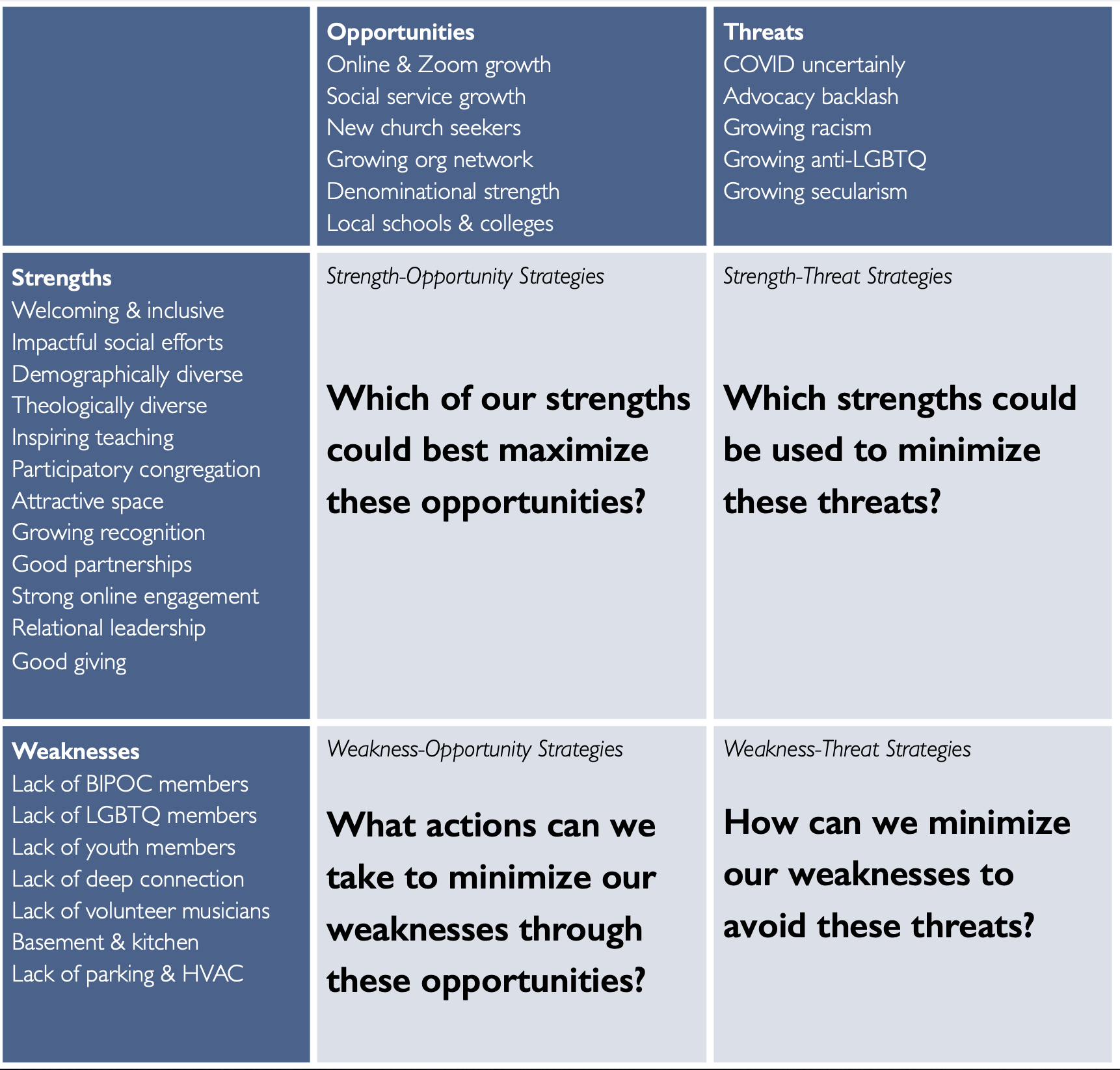What are our strengths, weaknesses, opportunities, & threats?
purpose
You are invited to review this draft SWOT analysis of OSC and provide your input and feedback. A SWOT analysis is a tool for understanding the internal strengths and weaknesses of an organization, and the external opportunities and threats facing that organization. There is a SWOT analysis in our current Mission Commitment from 2017. Just as we did then, we’ll use this analysis to develop our priorities for 2021 through 2023.
Here are some questions to consider as you review:
In what ways to do you agree or disagree with the draft analysis below?
What would you add to the strengths, weaknesses, opportunities, or threats?
How do you think this analysis could inform our priorities for the next 3 years?
Analysis of Strengths
OSC Member households are spread out across the United States.
Strengths are the internal characteristics that make us more effective in our mission. Below are our strengths as reflected in our listening sessions, feedback survey, and internal analysis:
Highly welcoming and inclusive congregation
Impactful social service and social justice efforts
Demographically and theologically diverse congregation
Inspiring teaching, groups, and classes geared toward newcomers
Good level of congregational participation in programs & services
Clean & attractive sacred space with little overhead expenses
Growing recognition & influence in the surrounding community
Good partnerships with and community groups & City departments
Staff & congregation largely comfortable with online engagement during COVID-19
Well-aligned & relationally connected staff and Board leadership
Good base of consistent membership giving
Notes on strengths
Several areas identified as weaknesses in our 2017 SWOT analysis have now become strengths:
We have developed effective new groups and classes whereas a previously identified weakness was “Lack of discipleship training.”
Participation in programs and services have grown whereas a previously identified weakness was “Poor integration of new people.”
Membership and consistent giving have grown whereas a previously identified weakness was “Inconsistent internal giving.”
Awareness of our church in the community has grown significantly whereas a previously identified weakness was “Poor community recognition.”
Analysis of Weaknesses
Weaknesses are the internal characteristics that make us less effective in our mission. Below are our weaknesses as reflected in our listening sessions, feedback survey, and internal analysis:
Lack of equitable representation for Black, Indigenous, People of Color (BIPOC) and LGBTQ persons
Lack of representation among youth & lack of youth opportunities
Lack of widespread congregational connections beyond the Sunday Gathering
Lack of volunteer musicians & strong musical worship culture
Remaining un-renovated areas of the facility (basement & kitchen)
Limitations on our facility (parking & HVAC)
Notes on Weaknesses
Two areas of former strength from our 2017 SWOT analysis have now become weaknesses:
We are less racially diverse, largely due to most of our growth over the past 3 years coming through the addition of white families. This has significantly decreased the percentage of our members who are BIPOC.
Until this year, our paid music team was a distinctive strength. This year, COVID-19 turmoil led to the relocation of 2/3 of our music team, which we are in the process of re-building.
Analysis of Opportunities
Opportunities are the external realities that increase the possibilities for our mission. Below are opportunities as reflected in our listening sessions, feedback survey, and internal analysis:
Growing sense of the need to tackle social problems in North San Diego County
Political polarization has lead to large numbers of people searching for new churches
Growing relationships with other local community organizations & advocacy groups
Increasing comfort-level among people with online groups & classes due to COVID-19
Strong membership growth among congregants attending from-a-distance during COVID-19
Well-connected to our denomination, regionally & nationally
Close proximity to local schools & colleges
Notes on Opportunities
Much of the growth we have experienced in 2020 is directly related to our use of social media and web-based conferencing for online gatherings, groups, and classes during the COVID-19 pandemic. This was unexpected. Much credit goes to our entire church for demonstrating the agility to adapt quickly and the flexibility to be patient with change. It is not likely our church would have survived if the pandemic had occurred prior to 2017.
Our close proximity to local schools and colleges is an opportunity we identified in 2017, but have struggled to engage effectively. This is a difficult challenge to overcome at our size, but one we still believe is important.
Analysis of Threats
Threats are the external realities that impede our mission. Below are threats as reflected in our listening sessions, feedback survey, and internal analysis:
Nationwide social & economic uncertainly related to the COVID-19 pandemic
Possible backlash from City departments & officials due to our growing advocacy efforts
Growing movements of racism, nationalism, and anti-LGBTQ bigotry nationwide
Growing secularism, especially after highly religiously-polarized national election
Notes on Threats
Much of what we threat we face as a church are considerably related to nationwide anxiety, uncertainty, and volatility in the aftermath of rising social and political polarization.
The more active OSC becomes in advocating for social, racial, and climate justice, the more likely we will face threats from those who oppose our commitment to these issues on political grounds.
SWOT STRATEGIES
The advantage of a SWOT analysis is that it can be used to think creatively about strategies that help us use our strengths and opportunities to meet the challenges of our weaknesses and threats. Take time to consider the four questions in the center of this grid and offer any feedback you have below.


